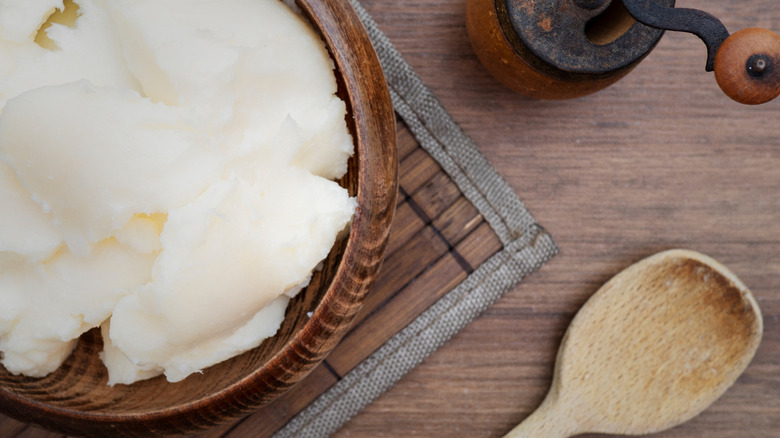The Fastest Way To Render Beef Tallow Is Still Pretty Slow
We may receive a commission on purchases made from links.
Beef tallow is one of the overlooked gems of the home kitchen. With a higher smoke point than butter it can be used for all kinds of frying and is a great way to level up frozen fries or add richness to your breakfast eggs. Beef tallow is simply beef fat that's been cooked down and filtered to remove impurities; it's also easier than you might think to make at home. If avoiding food waste is part of your cooking philosophy, you can prevent trimmings from your brisket or other fatty cuts from ending up in the trash by extracting out the tallow.
The downside is that although it's relatively simple to do, it's a slow process. There are two main methods to render your fat: In a slow cooker or on the stovetop. While using a slow cooker has the benefit of being hands-off, it will take around 6-8 hours to fully render. By opting for the stovetop method, you're going to cut this time in half, with just 3-4 hours needed. While it does require you to watch it during cooking, this has the benefit of giving you more control. You can stir to ensure that it's breaking down evenly, and most importantly, make sure that your tallow doesn't burn.
How to make beef tallow on the stovetop
To make beef tallow at home, you need to start with beef fat, either leftover from your cooking or purchased from a butcher. Be aware that raw beef fat can spoil very quickly, so it's best to store the fat in the freezer until you're ready to get to work. Start by removing any pieces of meat from the fat, then cutting it into small pieces. This will help speed up the process.
Add your fat to a large stock pot with enough water just to cover the bottom. The water is optional but can help your fat from burning or taking on color. Over a low heat, cook your fat for 3 to 4 hours, stirring every 30-60 minutes to prevent it sticking to the bottom. As the fat heats it will liquefy and simmer, but should not be allowed to boil. Your tallow is done rendering when the fat has turned to liquid, and any residual meat and skin crisp up and float to the top.
Straining your tallow is an important part of the process, as any impurities left in have the potential to turn rancid (as well as end up in your cooking). A fine sieve can be used to remove larger pieces of meat and skin, but a second strain through a cheese cloth or coffee filter will remove small particles. Your strained tallow can then be transferred to a glass jar (like these ComSaf airtight cannisters) for storage — follow our storage tips here – where it will become solid and last up to six months in the pantry or a year in the fridge.

